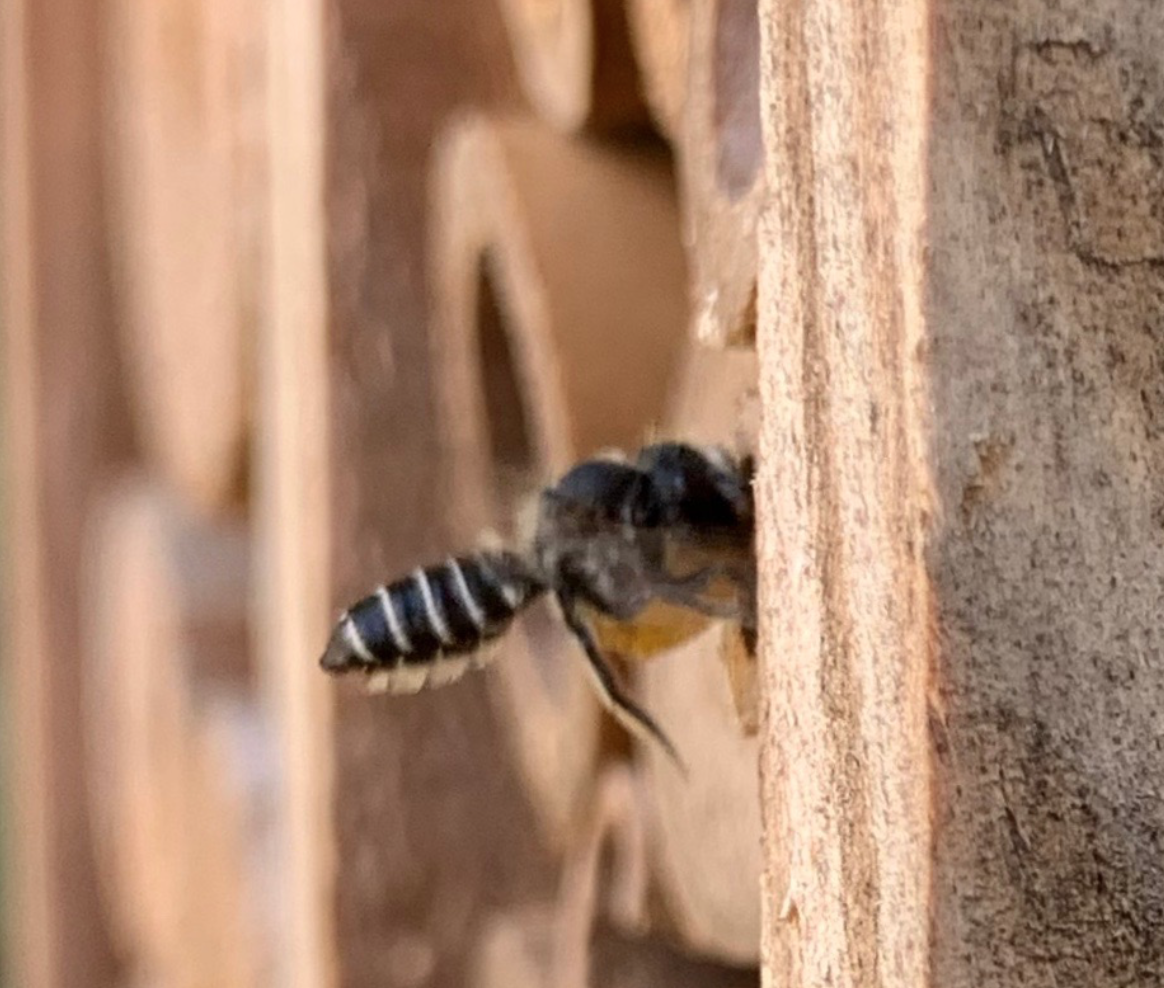Consider Adding a Bee Hotel to Your Garden
Last summer, I decided to add some bee hotels to my garden. I didn’t expect anything to happen but sure enough, they were appealing to the bees! The bees that use bee hotels are called leafcutter bees, which are native to our area. They serve a vitally important role in pollinating our crops, including tomatoes and blueberries. They are gentle by nature and won’t generally sting unless threatened. If they do sting, it’s a mild sting like that of a sweat bee, not painful like the sting of a honeybee. Leafcutters are solitary bees, which means they don’t live in a hive with other bees. They don’t produce honey and they only fly in a range of about 300 feet to search for food. They are excellent and efficient pollinators.
Young leafcutters, both male and female, emerge from their cocoons in the spring and get to work. Their mission is to mate and leave behind some fertilized eggs, because they will all die at the end of the summer.
The female leafcutter has very prominent mandibles so that she can cut small pieces of leaf. She does not bite with these mandibles. This female leafcutter bee is seeking pollen from a native Geranium maculatum.
The male leafcutter bee does not have the prominent mandibles as it does not cut leaves for the nest, only the female does that. The male has a blunt abdomen and no stinger. This male leafcutter is visiting a native Helianthus helianthoides.
After mating, the female enters a hollow stick or woody stem and creates a chamber from pieces of leaf.
Here is a female leafcutter bee zooming into my bee hotel with a piece of leaf to make a nest for an egg. The hairs under the abdomen are used to collect pollen after the leaves are in place.
She then deposits a fertilized egg in the chamber, dusts it with a generous coating of pollen and seals the chamber with more pieces of leaf.
Once the leafy chamber has been made and an egg has been deposited, the leafcutter bee covers it with pollen. Here is the bee heading in covered with pollen on the underside of her abdomen that she has collected from native plants.
She makes multiple chambers like this in a long row in the stick and then seals off the stick at the top.
By the end of the summer, most sticks will be filled with eggs and sealed up for safe keeping. Once this job is done, the female leafcutter bee will die.
The eggs will slowly develop over the winter, using the pollen as food, and the new bees will emerge from the stick the following spring and repeat the cycle.
I take my bee hotels down at the end of the summer, place them in mesh bags to prevent pests from disturbing the cocoons, and store the hotels in my outdoor storage shed for the winter. I will put them back up in the early spring so the young bees can emerge. But, you can leave your bee hotels out all winter. To learn more about how to take care of your native leafcutter bees and bee hotels, click on this image above.
Native bees need pollen from native plants because the developing bees don’t recognize the pollen from non-native plants, so they won’t eat it. That’s why it’s so important that we plant native plants. Without them, our native bee species cannot survive. Honeybees, by contrast, are indiscriminate feeders, meaning they are not picky about what flowers they visit. They don’t rely on native plants for survival. Honeybees actually compete with our native bee species by taking nectar and pollen from our native plants that our native bees desperately need.
Consider adding a bee hotel to your garden. The bees are fun to watch and it’s very rewarding. You will become attached and this will make you want to add native plants to your garden. The Blue Ridge Conservation bee hotels are easy to use. After bees hatch in the spring, simply replace the paper tubes and hang the hotels out again. You can keep using the same PVC hotel. If you get a store-bought bee hotel with sticks that cannot be removed and replaced, you should throw away the entire bee hotel and get a fresh one each year, as the used sticks can harbor mold and fungus that can harm the developing bees. To learn more visit Crown Bees.
If you want to be more involved in caring for native bees consider becoming a volunteer for the US Native Bee Monitoring project. To learn more click here.
Photos taken by Heidi James







